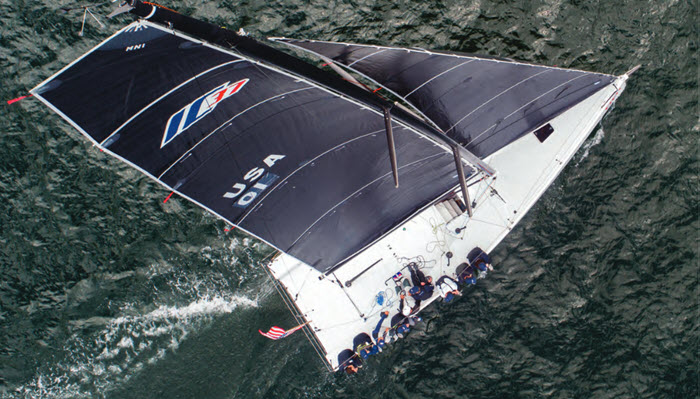Maybe in 40 – 50 years there will be enough of these, cheap enough, to replace the Thunderbird. And enough local sailors to crew them.

On a Mission to Maximize Participation
Published on September 9th, 2018
The late great Paul Elvstrom said it best: “It is much harder to build a solid class organization than to design a new boat.” But commerce motivates people to try, and while we may get excited at the latest shiny new object on the water, class building remains hard.
The mission: a boat for club racing, for amateur sailors, that could become an international one design class.
A boat length of 37-feet was chosen as the right balance point, being small enough to not require a large crew nor have a large footprint in logistics, but still large enough to provide solid and competitive big- boat racing both inshore and in limited coastal/offshore racing as well.
At this size, the systems on board can remain simple and therefore easy to manage and maintain. The 37ft hull length also helps keep the new IC37 by Melges within tight budget parameters.
There is no cruiser/racer duality in the design brief. Given the racing-only use intended for this boat, the NYYC specified three important characteristics to be included in the design:
• Rudder authority for maneuverability in close quarters.
• Longitudinal stability for confident control while planing in close quarters.
• A high-lift keel with adequate surface area for quick acceleration out of tacks, plus the ability to hold a lane upwind off the starting line in a large fleet.
The IC37 is fast racing yacht, yet it is not a sportboat, and has inherent stability from a low-VCG carbon keel fin with a large bulb, and a powerful hull form that maximizes crew-induced stability without resorting to extreme droop hiking to produce this performance.
The forward sections in the hull form are full enough to allow for easily-initiated planing speeds in as little as 15 knots of true wind, while remaining under full control and discouraging the bow from submarining.
The net result is a stable, seaworthy platform that is easier to sail at higher-than-average speeds and through a more diverse range of conditions than conventional sportboats can manage. We needed a fast and relevant modern boat,” said Project Manager Barry Carroll, “but also one that would be easy to race, maintain and fix for an active and competitive club membership.”
This is an important and somewhat unique aspect of the Melges IC37 Class. The first 20 boats are owned by the club and managed by its staff for chartered use by club members, who are typically experienced big-boat owners, but want to have a turn-key easy experience when going racing on the IC37.
However, beyond that, it is game on.
